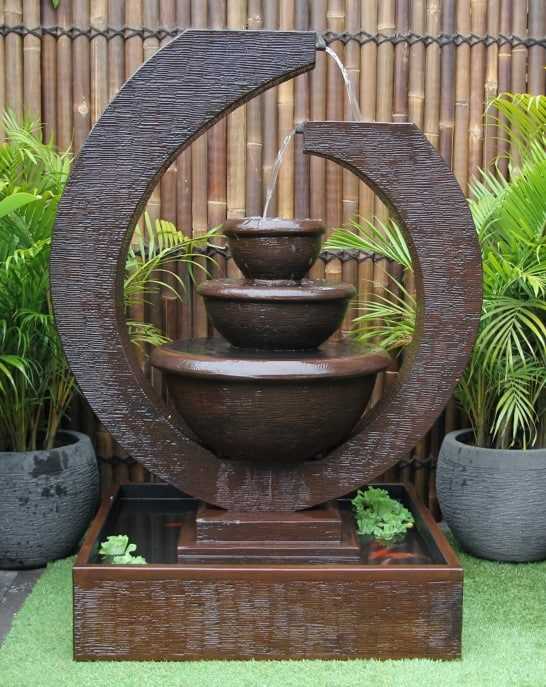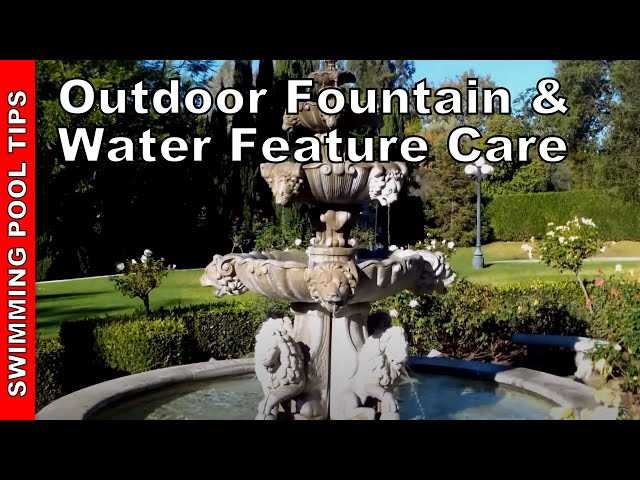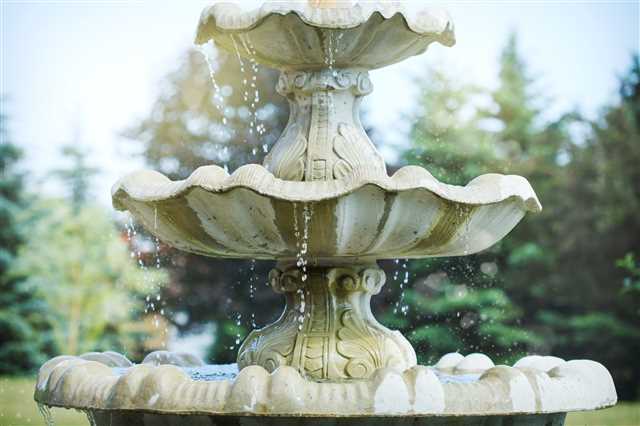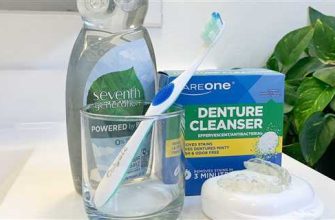
If you have a water feature in your garden, such as a pond or a fountain, you know how important it is to keep the water clean. Not only does clean water look more appealing, but it also helps to create a healthy environment for the plants, animals, and wildlife that call your water feature home. Here are some simple and easy tips to help you keep your water feature water clean.
The first thing you’ll want to do is to remove any debris from the water. This can be done with a small net or by using a filter for larger features like ponds. Removing debris will not only keep your water feature looking good, but it will also help to prevent the buildup of harmful bacteria and algae that can harm your plants and wildlife.
Another important tip is to clean your water feature regularly. This means removing any algae or foam that may have built up on the water’s surface. A mixture of warm water and vinegar can help to break down and remove these substances. Just be sure to rinse the water feature well after cleaning to get rid of any vinegar residue.
If you have a water pump in your water feature, it’s important to clean it as well. A dirty pump can lead to poor water circulation and can even damage the pump itself. Simply remove the pump and clean it with a cloth and warm water. Be sure to check the manufacturer’s guide for specific instructions on how to clean your pump.
Lastly, don’t forget to keep your water feature well-maintained during the winter months. Freezing temperatures can cause concrete to crack, so if your water feature is made of concrete, it’s best to empty it and store it indoors until spring. For other types of features, you can use a pond heater or a de-icer to keep the water from freezing over.
By following these simple tips, you can keep your water feature water clean and free from harmful bacteria and algae. This will not only help your water feature look its best, but it will also create a healthy environment for the plants, wildlife, and other creatures that rely on it for survival. So take the time today to clean and maintain your water feature – you won’t regret it!
- Regular Cleaning of Fountain Pump
- Using Vinegar as a Cleaning Agent
- Step 1: Gather Your Materials
- Step 2: Determine the Type of Water Feature
- Step 3: Dilute the Vinegar
- Step 4: Begin the Cleaning Process
- Step 5: Remove Stubborn Stains
- Step 6: Rinse and Repeat
- Step 7: Enjoy the Benefits
- Proper Placement of Water Feature
- Consider sunlight exposure
- Avoid areas with excessive debris
- Keep it within reach of an outdoor power source
- Consider the safety of animals and children
- Benefits of water feature placement
- Filtering the Water
- 1. Mechanical Filters
- 2. Biological Filters
- 3. UV Filters
- 4. Chemical Filters
- Preventing Algae Growth
- 1. Limit Sunlight Exposure
- 2. Use a Pond Filter
- 3. Add Plants
- 4. Keep the Water Moving
- 5. Clean Regularly
- 6. Avoid Overfeeding Fish
- 7. Use an Algae Control Product
- Will Vinegar Hurt Your Fountain Pump?
- How Vinegar Can Help Keep Your Water Feature Clean
- Will Vinegar Harm Your Fountain Pump?
- Alternatives to Vinegar for Cleaning Your Water Feature
- Video:
- An Essential Guide to Water Features with Mark Lane | PrimroseTV
Regular Cleaning of Fountain Pump
Keeping your water feature clean is an essential part of maintaining its beauty and functionality. One area that requires regular cleaning is the fountain pump. Regular maintenance of the pump will help ensure proper water flow and prevent issues such as clogging and algae growth. Here are some tips on how to clean your fountain pump:
- Know when to clean: Regular cleaning of the fountain pump is recommended every 2-4 weeks, depending on the size and usage of your water feature. Cleaning more frequently may be necessary if you notice excessive foam or debris accumulating around the pump.
- Turn off the pump: Before cleaning, make sure to turn off the pump and unplug it from the power source. This will ensure your safety and prevent any potential damage.
- Remove the pump: Carefully take out the pump from its place in the fountain. If your water feature is outdoors and it’s winter, it’s best to remove the pump and store it in a dry place until the weather improves.
- Remove debris: Use a clean cloth or a small brush to remove any debris or algae buildup from the pump. Be thorough in cleaning all the nooks and crannies to prevent future clogs and issues.
- Clean the pump with vinegar: Fill a bucket or basin with a mixture of water and vinegar. Submerge the pump in the vinegar mixture and let it soak for about 30 minutes. Vinegar acts as a natural cleaning agent that helps remove mineral deposits and kill bacteria without harming the pump.
- Rinse the pump: After soaking, rinse the pump thoroughly with clean water to remove any residue. It’s important to remove all the vinegar solution and debris to prevent any negative effects on the water or wildlife in your water feature.
- Reassemble and test: Once the pump is clean and dry, reassemble it and place it back into the fountain. Plug in the pump and test it to ensure proper water flow and functioning.
By regularly cleaning your fountain pump, you’ll not only keep your water feature looking beautiful but also prevent potential issues from arising. Following these step-by-step cleaning instructions will help maintain a clean and healthy waterscape for you, your plants, and any wildlife that may visit your garden or ponds.
Using Vinegar as a Cleaning Agent
When it comes to maintaining your water feature, it’s important to find effective and safe cleaning agents. One often-overlooked option is vinegar. Vinegar is a natural and cost-effective solution that can help keep your water clean and free from harmful algae and bacteria. In this guide, we will explain how to use vinegar to clean your water feature effectively.
Step 1: Gather Your Materials
Before you begin, make sure you have the following materials:
- Vinegar
- A small cloth or sponge
- A pump for removing water (if necessary)
- Other cleaning tools such as a brush or scrubber (if needed)
Step 2: Determine the Type of Water Feature

Before using vinegar to clean your water feature, it’s important to know whether it is safe for your specific type of feature. Vinegar can be used to clean a variety of water features, including ponds, fountains, and pumps. However, certain materials like concrete may be more sensitive to vinegar, so be sure to check the manufacturer’s instructions or consult a professional if you’re unsure.
Step 3: Dilute the Vinegar
If you’re using vinegar to clean your water feature, it’s best to dilute it with water. Mix one part vinegar with three parts water to create a safe and effective cleaning solution. This will help prevent any potential harm to your plants or fish.
Step 4: Begin the Cleaning Process
Start by removing any large debris from the water feature using a net or sieve. Then, dip the small cloth or sponge into the vinegar solution and gently scrub the surfaces of your water feature. Focus on areas where algae or other buildup is present.
Step 5: Remove Stubborn Stains
If you encounter stubborn stains or buildup, you can use a brush or scrubber to help remove them. Be careful not to scrub too hard, as this could damage the surfaces of your water feature.
Step 6: Rinse and Repeat
After scrubbing, rinse your water feature thoroughly with clean water to remove any vinegar residue. Repeat the cleaning process if necessary until your water feature is clean and clear.
Step 7: Enjoy the Benefits
Once your water feature is clean, you can enjoy the many benefits of using vinegar as a cleaning agent. Vinegar is not only effective at removing algae and bacteria, but it also helps prevent them from coming back too quickly. Additionally, vinegar is a safe and environmentally friendly option that won’t harm wildlife or plants in your garden.
Overall, using vinegar to clean your water feature is a simple and easy way to keep it looking its best. Whether you have a small pond, a decorative fountain, or a large outdoor feature, vinegar can help you maintain a clean and healthy environment for your water feature and its inhabitants.
Proper Placement of Water Feature
When it comes to keeping your water feature water clean, one important aspect that often gets overlooked is the proper placement of the feature. The location of your water feature can greatly impact its cleanliness and overall enjoyment. Here are some tips on choosing the right spot for your water feature:
Consider sunlight exposure

Before placing your water feature, consider the amount of sunlight it will receive throughout the day. While some sunlight is beneficial for preventing algae growth, too much direct sunlight can lead to excessive evaporation and increased algae growth. Aim for a spot that gets a mix of sun and shade to maintain a good balance.
Avoid areas with excessive debris
Choose a spot that is away from trees or plants that shed a lot of leaves, as fallen debris can quickly dirty the water. Regularly removing debris from the water can be time-consuming, so preventing it from entering the water in the first place is a smart move.
Keep it within reach of an outdoor power source
Most water features, such as fountains or pumps, require a power source to operate. Make sure to place your water feature within reach of an outdoor power source so that you can easily plug it in without the need for extension cords.
Consider the safety of animals and children
If you have pets or young children, keep in mind their safety when choosing a spot for your water feature. Make sure it is not easily accessible or in an area where they could potentially fall in. Safety should always be a top priority when designing your garden.
Benefits of water feature placement
Proper placement of your water feature can offer several benefits. For one, it can help prevent the growth of algae, as sunlight exposure and debris play a significant role in its development. Additionally, placing your water feature appropriately can maximize its aesthetic appeal and create a serene and relaxing environment within your garden.
When done correctly, your water feature can become the focal point of your garden and a haven for wildlife such as birds and butterflies. So, before you start building or placing your water feature, take some time to consider these tips and ensure that you choose the perfect spot to enjoy the natural beauty and tranquility it can bring.
Filtering the Water
One of the key steps in keeping your water feature clean is filtering the water. By removing debris, organic matter, and pollutants from the water, you can ensure that it stays clear and healthy for your plants and wildlife to thrive.
There are several ways to filter the water in your water feature, depending on the type of feature you have. Here are some options:
1. Mechanical Filters
Mechanical filters are designed to physically remove larger particles and debris from the water. They usually consist of a foam or sponge material that traps and holds the debris while allowing water to pass through.
To use a mechanical filter, simply place it in your water feature, making sure it is securely in place. The debris will get caught in the filter, and the clean water will pass through.
Remember to regularly clean and maintain your mechanical filter to ensure its effectiveness.
2. Biological Filters
Biological filters help to break down harmful bacteria and other organic matter in the water. They are typically filled with beneficial bacteria that naturally remove toxins and pollutants.
To use a biological filter, place it in your water feature and let it do its job. The bacteria inside will help maintain a healthy balance in the water, preventing the buildup of algae and other harmful substances.
3. UV Filters
UV filters use ultraviolet light to kill algae and bacteria in the water. They are particularly useful in preventing green, murky water in ponds and other outdoor water features.
To use a UV filter, simply install it in your water feature. The UV light will kill the algae and bacteria, leaving your water clear and clean.
4. Chemical Filters
Chemical filters use various substances, such as activated carbon or zeolite, to remove impurities from the water. They can be used in conjunction with mechanical and biological filters for added effectiveness.
To use a chemical filter, follow the manufacturer’s instructions for the specific product you have. Typically, you will place the filter media in a cartridge or bag and place it in your water feature. The impurities will be trapped in the filter media, leaving the water clean and clear.
No matter which type of filter you choose, regular maintenance is key to keeping your water clean. Clean or replace filter media as needed, and monitor the water quality to ensure it is always clear and healthy.
Preventing Algae Growth
Algae growth is a common issue in outdoor water features, such as ponds, fountains, and water gardens. If not kept in check, algae can quickly take over your water feature, making it look dirty and unappealing. Fortunately, there are steps you can take to prevent algae growth and keep your water feature clean and clear.
1. Limit Sunlight Exposure
Algae thrives in sunlight, so one way to prevent its growth is to limit the amount of direct sunlight your water feature receives. If possible, position your pond or fountain in a shady area or use plants and other landscaping features to provide shade.
2. Use a Pond Filter
Installing a pond filter is a simple and effective way to prevent algae growth. A good-quality filter will help remove debris and excess nutrients from the water, which are the main food sources for algae. Be sure to clean or replace the filter regularly to maintain its efficiency.
3. Add Plants
Another natural way to prevent algae growth is to add aquatic plants to your water feature. Plants help absorb excess nutrients from the water, depriving algae of their food source. Choose plants that are well-suited for your climate and the specific conditions of your water feature.
4. Keep the Water Moving
Algae tends to accumulate in stagnant water, so it’s important to keep the water moving in your water feature. Consider adding a fountain or waterfall to create a constant flow of water, which can help prevent algae growth.
5. Clean Regularly
Regular cleaning is essential for preventing algae growth. Remove any leaves, debris, or other organic matter that may have fallen into your water feature, as they can contribute to algae growth. You can use a net or a pond vacuum to remove these materials.
6. Avoid Overfeeding Fish
If your water feature is home to fish, make sure not to overfeed them. Excess fish food can lead to an increase in nutrients in the water, which can encourage algae growth. Feed your fish only the amount they can consume in a few minutes.
7. Use an Algae Control Product
If you’re already experiencing algae growth and none of the above steps are working, you may need to use an algae control product. There are various products available on the market, including algaecides and biological treatments, which can help clear up the algae problem. Follow the manufacturer’s instructions carefully when using these products.
By following these simple steps, you can prevent algae growth and keep your water feature clean and beautiful. Whether you have a small outdoor pond or a large water garden, taking care of your water feature will ensure that it remains a focal point of your garden for years to come.
Will Vinegar Hurt Your Fountain Pump?
If you have a water feature in your outdoor space, it’s important to ensure that the water remains clean and free from any build-up or algae. One common question that arises is whether or not vinegar can be used to clean your fountain pump. Let’s take a closer look at how vinegar can be used to keep your water feature clean, and whether or not it will harm your fountain pump.
How Vinegar Can Help Keep Your Water Feature Clean
Vinegar is a versatile and effective cleaning agent that is commonly used in households. It has natural antibacterial properties and can help kill algae and prevent its growth. Additionally, vinegar can help remove mineral deposits and stains that may form over time in your water feature. This means that using vinegar can help keep both the water and the pump clean.
Will Vinegar Harm Your Fountain Pump?
The good news is that vinegar is generally safe to use on fountain pumps. It won’t harm the pump or affect its performance when used correctly. However, it’s important to follow these steps to ensure that your pump doesn’t get damaged:
- First, make sure that the pump is turned off and unplugged.
- Thoroughly clean the fountain and remove any debris or dirt.
- Mix a solution of equal parts water and white vinegar.
- Using a cloth or sponge, gently scrub the pump and any parts that need cleaning.
- Rinse the pump with clean water to remove any vinegar residue.
- Allow the pump to dry completely before plugging it back in and turning it on.
By following these steps, you can safely clean your fountain pump without causing any damage. However, it’s important to note that vinegar should not be used to clean all types of water features, especially those with delicate materials or finishes. If you’re unsure about whether vinegar is safe to use on your specific water feature, it’s always best to consult the manufacturer or a professional for guidance.
Alternatives to Vinegar for Cleaning Your Water Feature
If you’re not comfortable using vinegar or if it’s not suitable for your water feature, there are alternative options available. One common alternative is using bleach. Bleach can be effective in killing bacteria and removing algae, but it needs to be used sparingly and correctly to prevent damage to the pump and other components. There are also commercially available water feature cleaning products that you can use, which are specifically designed for this purpose. Again, it’s important to follow the manufacturer’s instructions to ensure that you’re using the product safely and effectively.
To prevent algae and build-up in your water feature, it’s also important to take other steps, such as using a good quality filter, keeping the water clean and free from debris, and regularly removing any fallen leaves or other organic matter. Regular maintenance and cleaning will go a long way in keeping your water feature looking clear and inviting.
In conclusion, vinegar can be a safe and effective way to clean your fountain pump and keep your water feature looking its best. By following the proper steps and using vinegar in the correct concentration, you can safely remove any dirt, stains, and algae without harming your pump. However, it’s always wise to check the manufacturer’s guidelines or seek professional advice if you’re unsure about using vinegar or any other cleaning agent.








